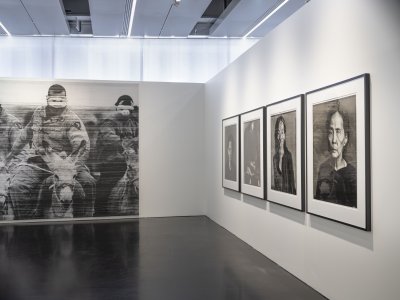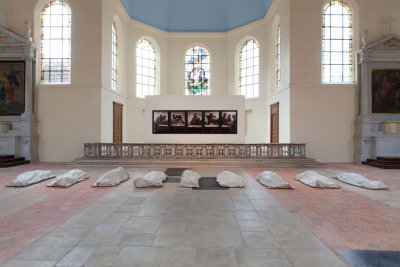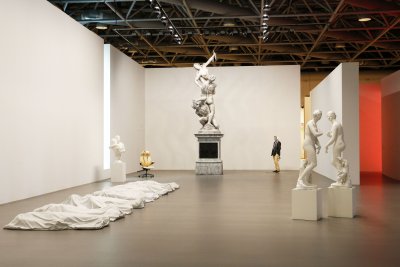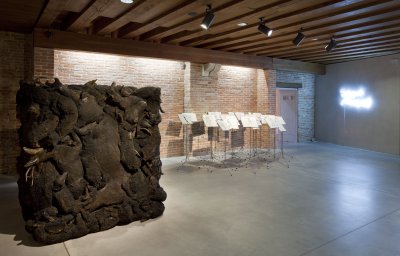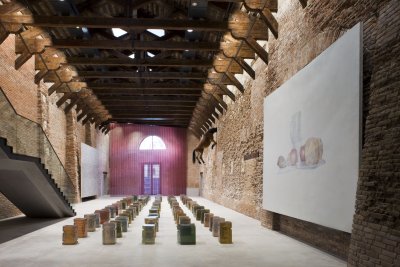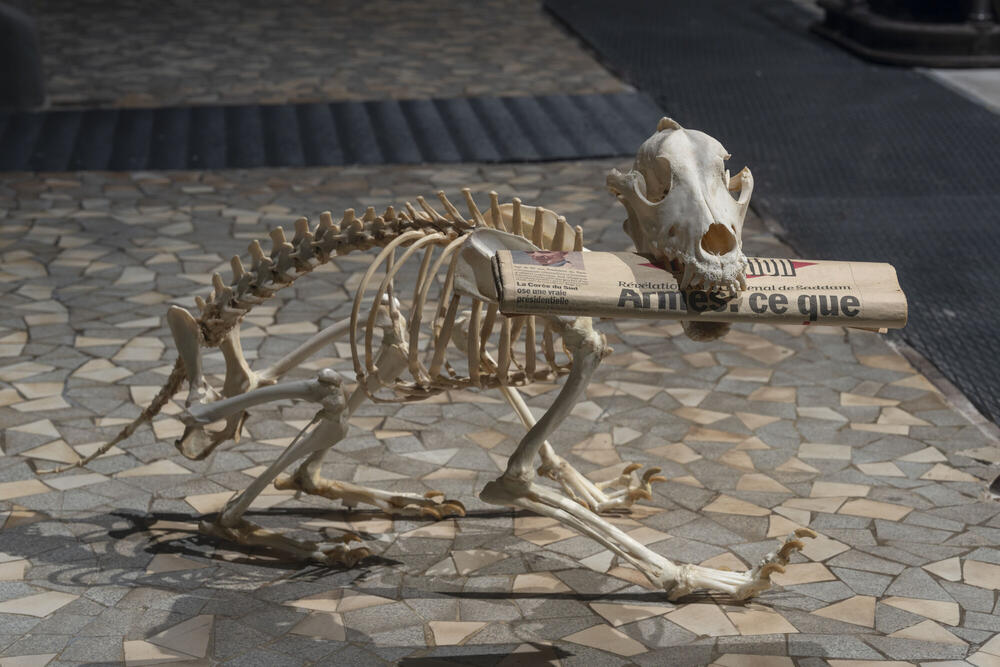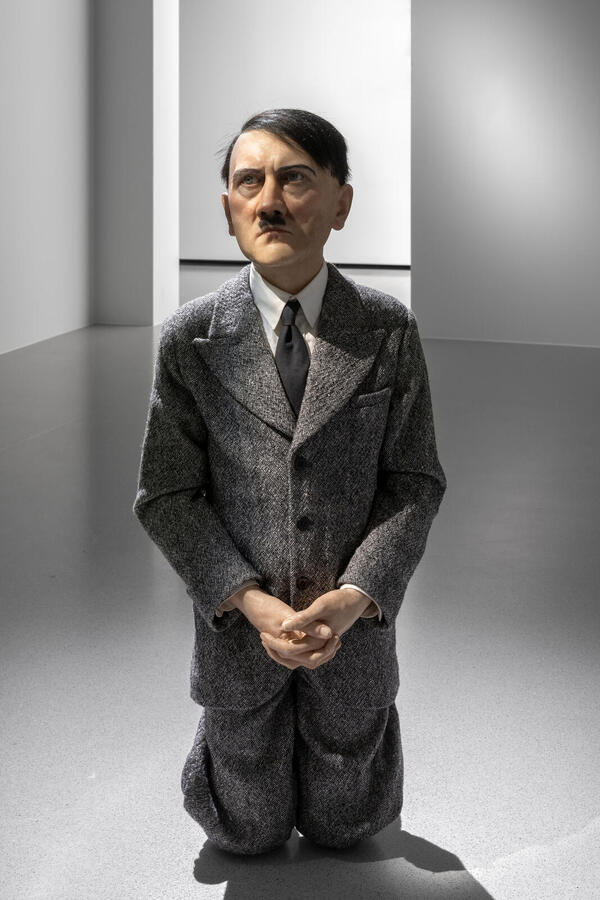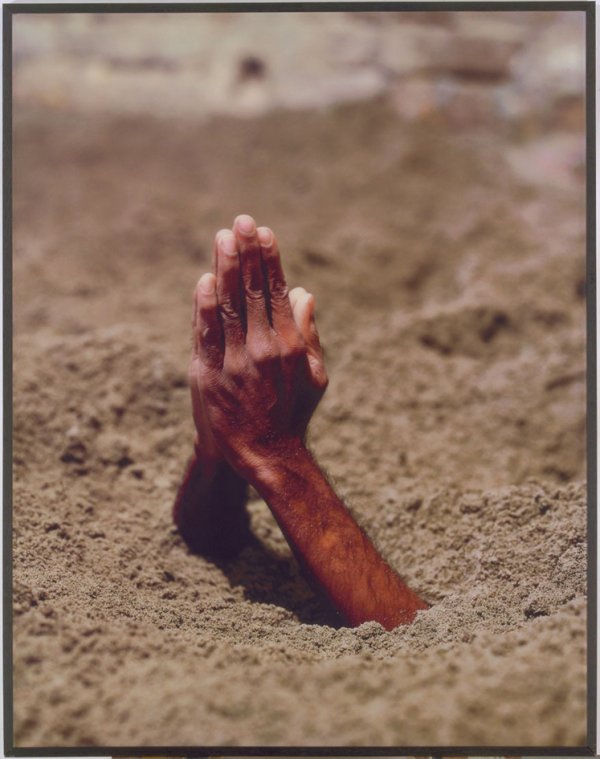All
2007
9 sculptures, white Carrara marble "P"
Variable dimensions
Nine bodies stretched out side by side. Nine dead people. Nine corpses of unknown identity and uncertain background. Rotting fl esh, forgotten then rediscovered, carelessly veiled and awaiting a better fate? Assassination victims discreetly hidden from our gaze by police sheets? Not easy to descry the nature of these beings we can guess as human from the outline of a foot, the angle of a shoulder, the protrusion of a knee. Not so much the rigour of marble as rigor mortis. An anonymous mass grave or a savage slaughter, this vision from Maurizio Cattelan, marked out by its eurythmy and its profusion, by its layout and its configuration—no two bodies alike.
Here imagination substitutes for observation: what are we really seeing? What do we really distinguish beneath these strange veils, these mysterious sheets of gauze? What dead butterfl ies beneath these troubling chrysalises? The use of Carrara marble is no accident. In resorting to a material like this—elementally precious, symbolically saturated—Cattelan succeeds, as he always loves to, in thwarting tradition and juggling with references. In this respect these nine enigmatic shrouds can be seen as related to certain major works of the past: we need to think only of Mantegna’s Lamentation over the Dead Christ, (c. 1480) and Stefano Maderno’s Martyrdom of Saint Cecilia (c. 1600) in Trastevere in Rome—a sculptural painting and a Baroque sculpture both emblematic of Italian illusionism. Here the trivial comes together with the divine, the corpse with the recumbent tomb figure, the sheet with the drapery and the scene of the crime with the church nave. No clue here that might allow us to elucidate a sacred, virtuoso vision that leaves the viewer wondering: does it come from a graveyard, a crypt, a morgue or a footpath?
Colin Lemoine, Exhibition catalog « Art Lovers. Histoires d’art dans la Collection Pinault », 2014, Grimaldi Forum de Monaco (Liénart Editions, 2014)
Here imagination substitutes for observation: what are we really seeing? What do we really distinguish beneath these strange veils, these mysterious sheets of gauze? What dead butterfl ies beneath these troubling chrysalises? The use of Carrara marble is no accident. In resorting to a material like this—elementally precious, symbolically saturated—Cattelan succeeds, as he always loves to, in thwarting tradition and juggling with references. In this respect these nine enigmatic shrouds can be seen as related to certain major works of the past: we need to think only of Mantegna’s Lamentation over the Dead Christ, (c. 1480) and Stefano Maderno’s Martyrdom of Saint Cecilia (c. 1600) in Trastevere in Rome—a sculptural painting and a Baroque sculpture both emblematic of Italian illusionism. Here the trivial comes together with the divine, the corpse with the recumbent tomb figure, the sheet with the drapery and the scene of the crime with the church nave. No clue here that might allow us to elucidate a sacred, virtuoso vision that leaves the viewer wondering: does it come from a graveyard, a crypt, a morgue or a footpath?
Colin Lemoine, Exhibition catalog « Art Lovers. Histoires d’art dans la Collection Pinault », 2014, Grimaldi Forum de Monaco (Liénart Editions, 2014)
Exhibitions

© Maurizio Cattelan
© Maurizio Cattelan, Kunsthaus Bregenz
Courtesy of Maurizio Cattelan's Archive.
Photo : Markus Tretter
Exhibition view, Kunsthaus Bregenz, February 2 - March 24 2008.
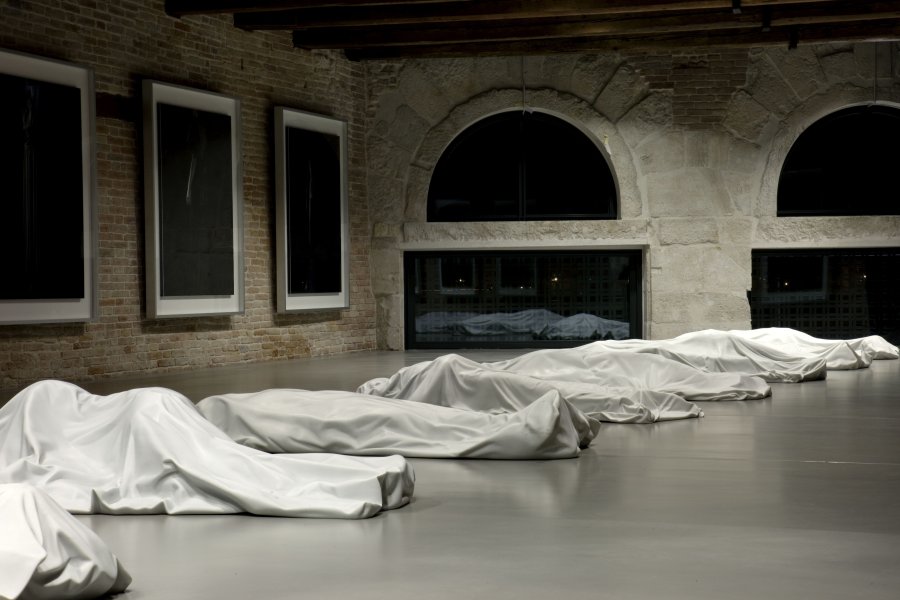
© Maurizio Cattelan
© Maurizio Cattelan
© Palazzo Grassi Spa.
Photo : ORCH orsenigo_chemollo
Exhibition view, Mapping The Studio, Venice, June 6 2009 - April 10 2011.
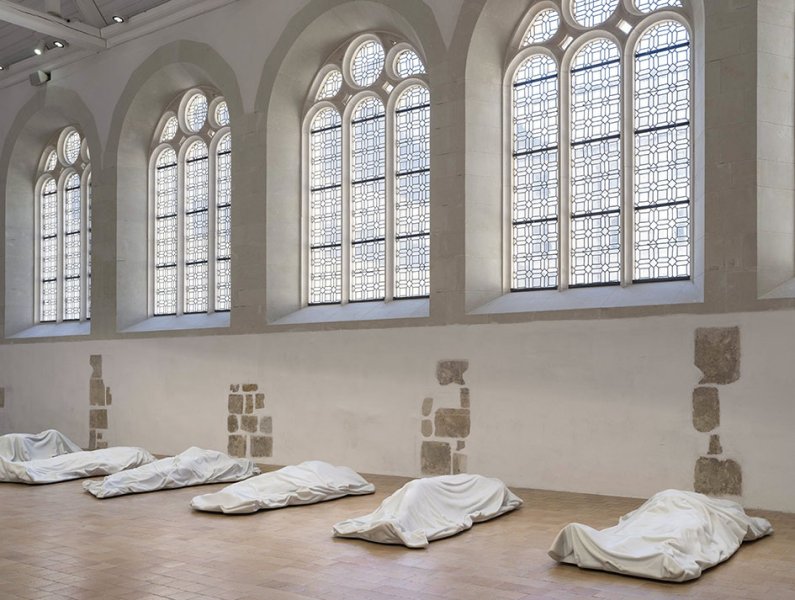
© Maurizio Cattelan
© Photo JF MOLLIERE
Exhibition view « Le noir et blanc dans la collection Pinault / Black and White in the Pinault Collection », Couvent des Jacobins, Rennes (FR), June 12th – August 29th 2021.
